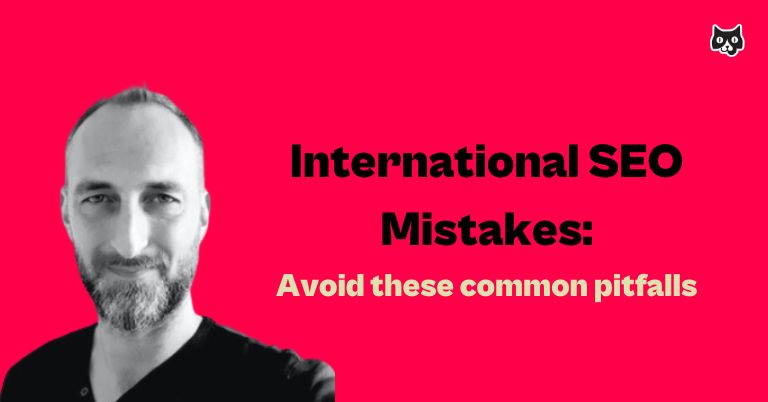If you lack expertise in multilingual SEO, keyword research, domain structures, or any other key areas of technical SEO, you risk poor SERP rankings and a negative user experience if you implement international versions of your website without proper planning.
Just as content marketing needs to be linguistically accurate and culturally relevant to resonate with your target audience, you need to carefully implement your SEO strategy, website structure, and content optimization to have a successful international SEO campaign.
That said, you shouldn’t feel overwhelmed either.
Yes, international SEO presents unique challenges, but if you’re already experienced in domestic SEO projects, understanding the most common mistakes in international SEO will give you a solid foundation to build on.
In this article, you’ll learn which pitfalls to avoid so you can build a strong brand overseas as you compete for the most valuable search terms across international markets.
1. Incorrectly using hreflang tags
Hreflang tags are crucial in HTML for specifying the language and geographic targeting of a webpage. When a website features multiple versions of the same page in different languages, hreflang tags help search engines identify which version to display based on the user’s language and regional settings.
So, as you can imagine, hreflang tags are a very important component of technical international SEO—if you don’t implement them correctly, you could show duplicate content or the wrong version of a page to your reader.
Given their complexity and significance, hreflang tags warrant thorough understanding, and, happily, my colleague Leanka recently wrote an entire blog post about them. I’d strongly recommend checking out her article, Mastering Hreflang Tags: An Easy Guide for Multiregional Websites.
Here’s an at-a-glance summary of some of the main takeaways:
- Don’t expand content without strategic planning:
Focus on translating key pages likely to drive conversions, as not all content will perform equally across languages - Don’t miss-implement hreflang tags:
Correctly place hreflang tags in the HTML head, ensuring each page self-references its canonical link, and clearly list all language alternatives. - Don’t overlook the details in region and language codes:
Always verify the accuracy of language and region codes to prevent misdirection (be meticulous here—it’s very easy to make mistakes with regional codes). - Don’t neglect hreflang tag validation and maintenance:
Use Ahrefs to regularly audit your hreflang tags. Check for issues like non-indexable pages incorrectly declared or missing hreflang attributes.
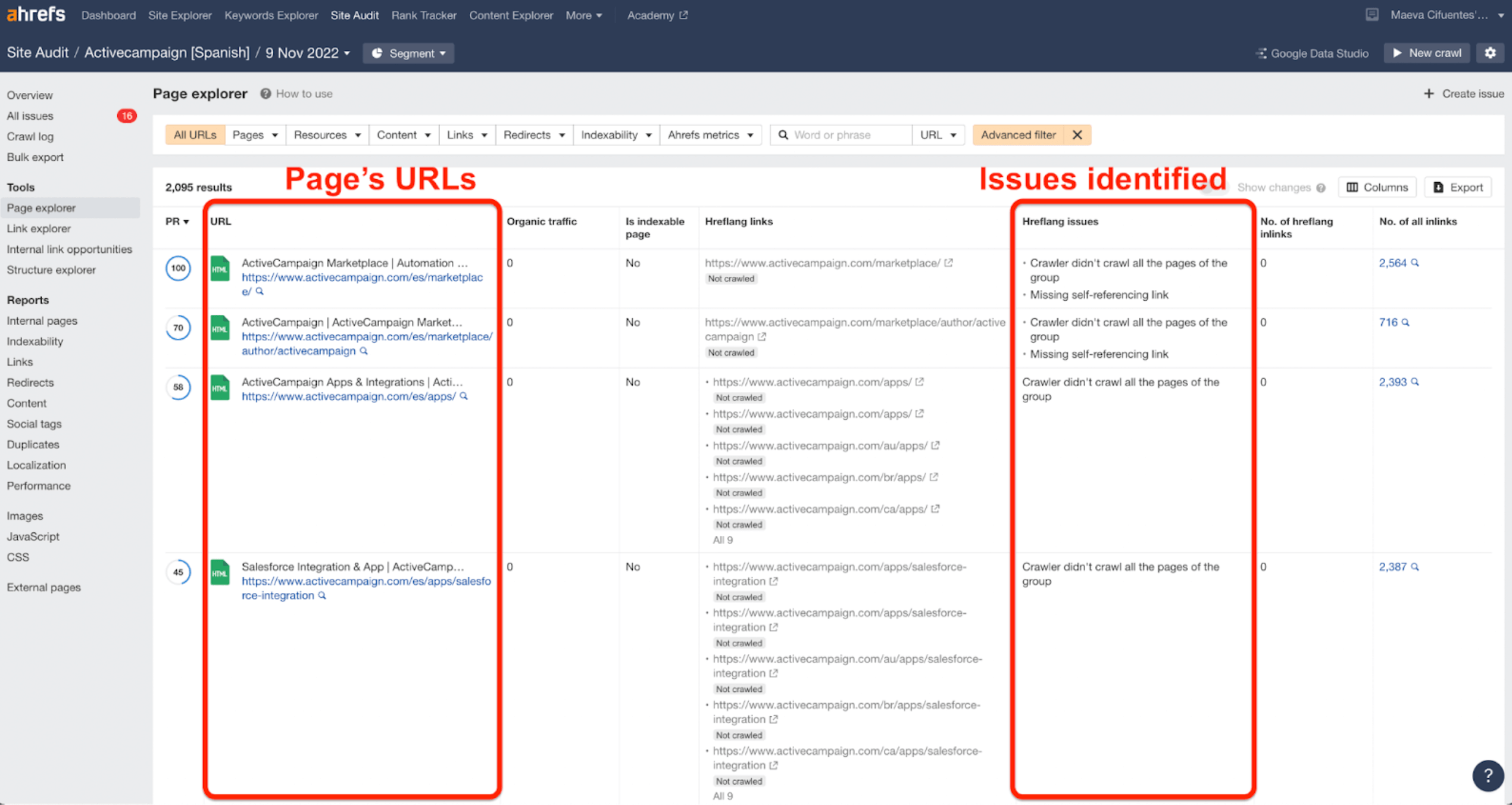
2. Not having specific URLs for each international site
Each version of your website targeted to a specific language or country should have its own distinct URL so Google can effectively crawl, index, and rank each site variation.
The alternative to this is to have locale-adaptive crawling, which is when the user’s language or region is used to trigger related content through a single URL. For example, if your user has a French-language browser, your homepage will display the French version. The problem here is two-fold:
1. User experience
Your visitor might not be able to easily share links or bookmark content, as the URL doesn’t change based on the language or regional version they’re viewing.
Also, relying solely on locale-adaptive crawling assumes all users in a specific locale prefer content in the local language, which might not always be the case—as a Brit living in Mexico, I sometimes suffer from this myself when I’m researching software and have to hunt around for the language/international site settings on a homepage (yep, first-world problems n’ all that).
2. Difficulty in Googlebot crawling
The main problem for international SEO is that without distinct URLs, search engines struggle to recognize and rank the different versions of the site for relevant local searches. This can lead to important content being underrepresented in search results in various regions—or the wrong version of the site is indexed and served to users.
“If your site has locale-adaptive pages (that is, your site returns different content based on the perceived country or preferred language of the visitor), Google might not crawl, index, or rank all your content for different locales. This is because the default IP addresses of the Googlebot crawler appear to be based in the USA.”
3. Automatically redirecting to localized versions without a clear option to a preferred alternative
Similar to locale-adaptive crawling, many sites are configured to automatically redirect users to localized content based on their IP address. Again there are user experience and SEO issues with this approach.
Firstly, it’s another Brit-in-Mexico kind of situation—I might not want to get redirected to your Latin-American Spanish content and I might get (typically) frustrated trying to find the original English-language version, with the US-dollar pricing, shipping options, and return policies I want.
Secondly, since most of Googlebot’s IP addresses are based in the US, the bot predominantly crawls and indexes the American site versions, meaning your redirected content might not be properly crawled or indexed, resulting in poor SERP positions.
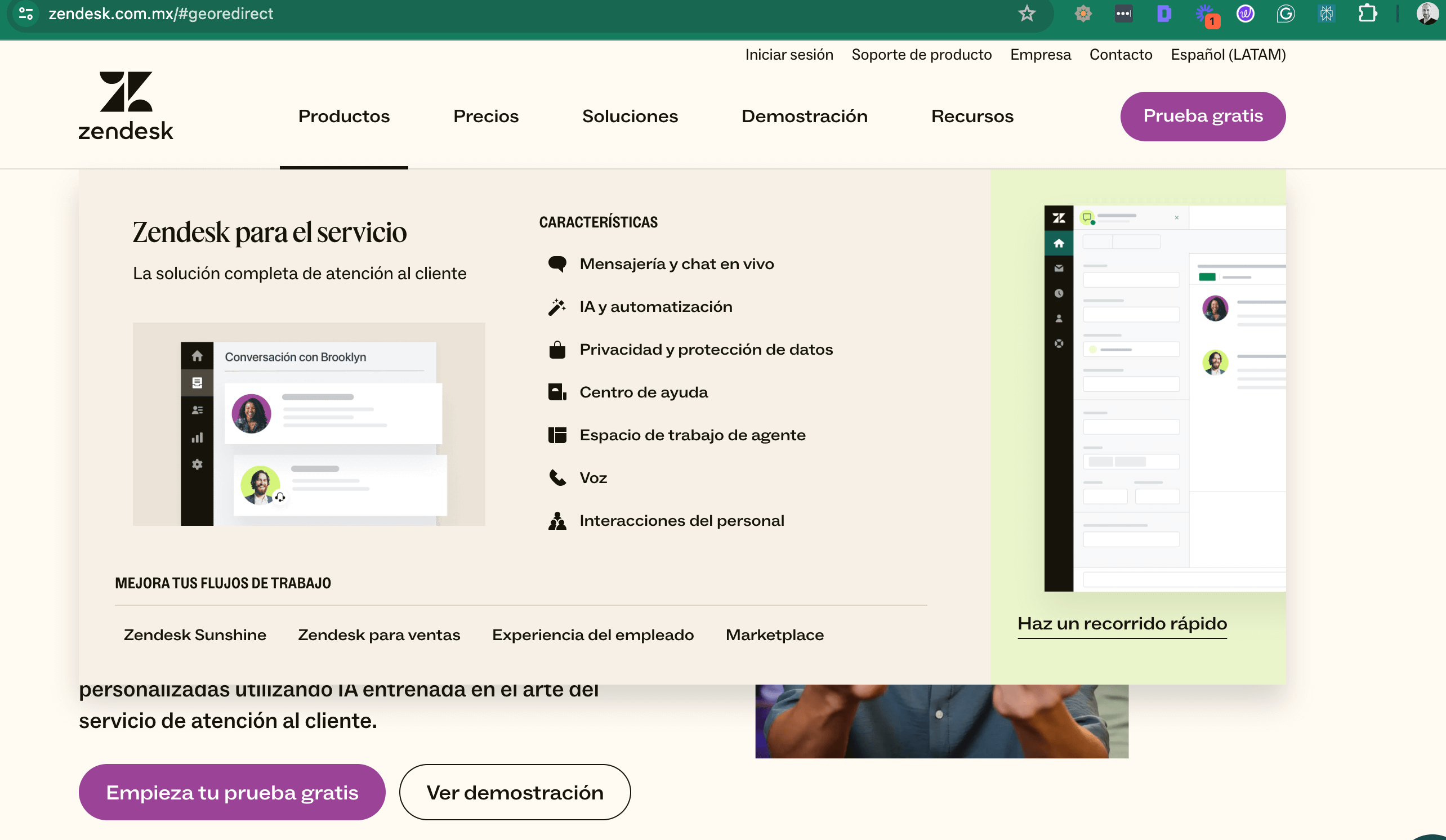
So, if you are going to auto-redirect users based on their IP addresses, make sure they have a clearly signaled option to select their preferred version of the site.
BUT since Googlebot is still going to be redirected just like your user—and because of those crawling and indexing issues, it’s best to avoid the auto-redirect altogether. Instead, keep the user and Googlebot on the site version they naturally land on and use the user’s IP address to suggest a relevant alternative.
See this example from Adobe Creative Cloud…
“This Adobe site doesn’t coincide with your location.
According to your location, we think you might prefer a Mexican website, where you’ll find content, offers and prices specific to your zone.”
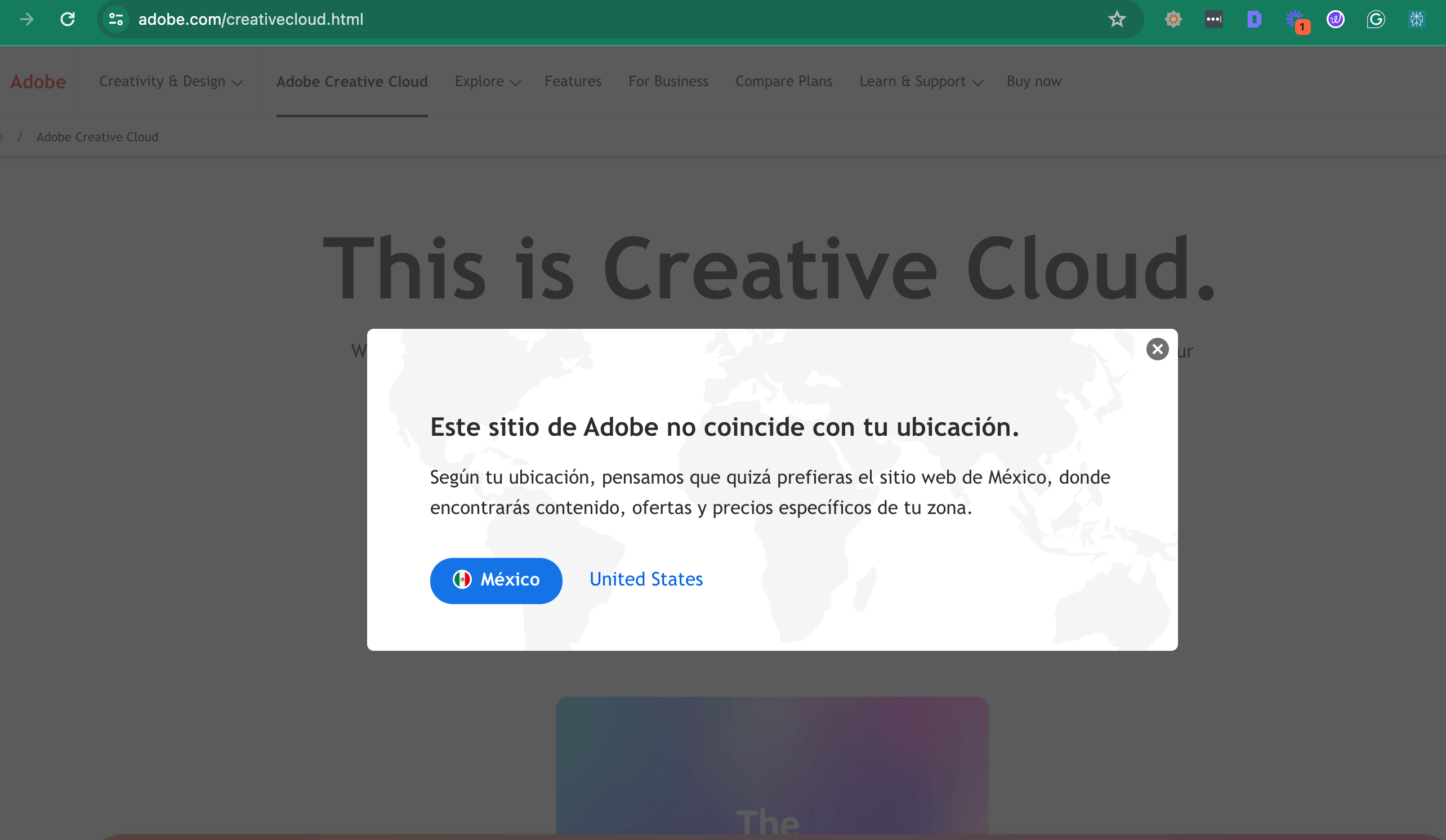
👉 Develop your international SEO strategy with tips from specialists in the industry. Discover 8 recommended best practices to capture global markets.
4. Having a top-level domain that’s already geolocalized
Country-specific ccTLDs like .uk, .mx, or .ca target the country they represent and can’t be repurposed to target other markets.
If you try to resolve this by adding language-specific subdirectories, you’ll likely experience weaker local signals to search engines compared with using ccTLDs, and face a more complex task in correctly implementing your hreflang tags.
Plus, country-specific ccTLDs don’t distinguish between different languages within a country, so a user in Canada, for example, might encounter issues if they prefer content in French rather than English.
In contrast, gTLDs like .com, .org, and .net are not linked to any specific country, which allows you to easily add international web versions with subdirectories or subdomains, each configured for a different region via Google Search Console.
For example, Netflix uses the subdirectory /mx-en for Mexico in English, as you can see below:
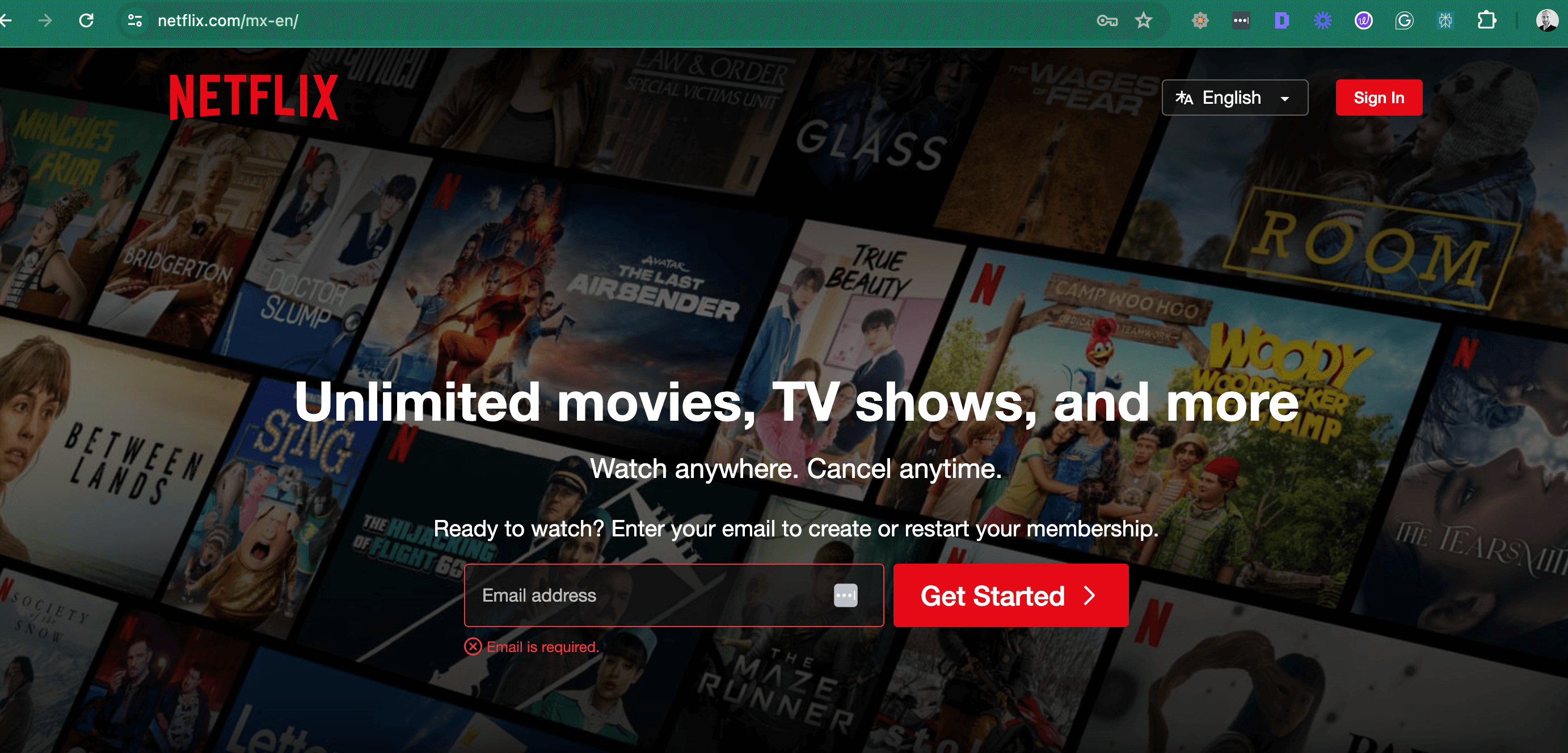
Nevertheless, some brands opt to invest in a separate ccTLD for each target country. This approach is demanding as it requires developing your brand and SEO presence from scratch for each domain. However, it can be highly effective, particularly if you’re already a household name.
For example, IKEA uses different ccTLDs for different countries, like ikea.ca for Canada. Then it uses subdirectories to target English and French-speaking audiences: ikea.ca/en/ for English and ikea.ca/fr/ for French.

5. Overlooking local content and language nuances
It’s essential for your content to be tailored to reflect the local consumer behaviors and preferences in each market.
Simply duplicating or directly translating content across various versions of your website can result in a lack of appreciation for important regional nuances that can affect the user experience and ultimately your ROI.
Even when the language is the same, the content may need adjustments. For example, walk into a Glasgow pub and strike up a conversation about “soccer” and see what happens*. In fact, don’t do that, but do be aware that when you try to tap into new markets you should be conscious of local terminology and cultural sensitivities.
*Probably nothing to be honest
A great example of regionally tailored content is Spotify, which doesn’t just translate its app and website for local markets but also curates its content to deeply integrate with the local music scene.
Likewise, this kind of commitment to authentic localized content should be reflected in your keyword research, which will help you conduct a thorough competitive analysis for each target market.

Another example of this is Flying Cat’s approach to international strategy for Active Campaign, a marketing automation platform that was targeting new markets across Europe (French, Italian, German, and Spanish, or FIGS).
We collaborated with regional experts, developed content strategies based on highly localized search behavior, and carried out in-depth audits of technical and UX issues.
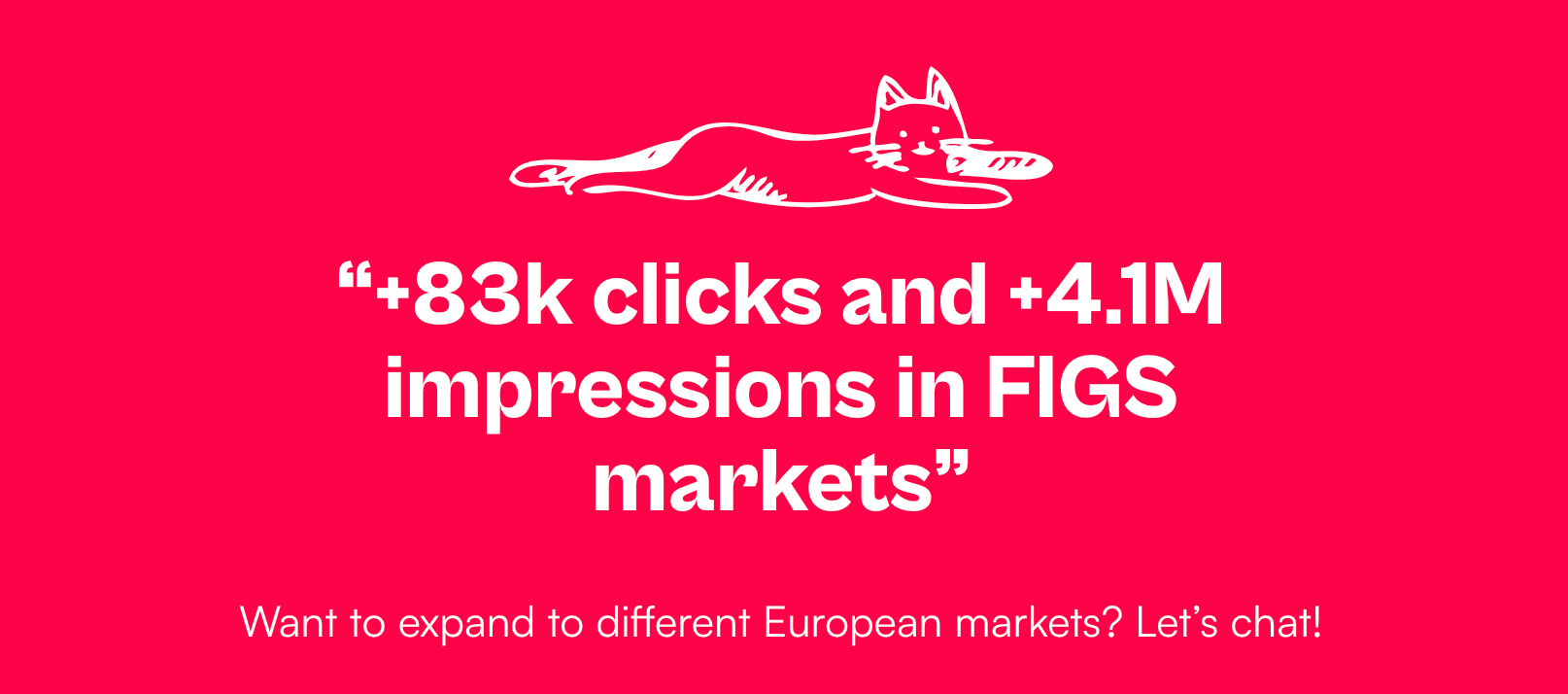
6. Misunderstanding content duplication risks
Despite any similarities your content might have across different web versions that use the same language, you don’t need to be concerned that these variations will be considered as duplicated content—as long as they’re properly geolocated for their respective markets.
By applying techniques like hreflang tags, Google Search Console configurations, and strategic URL structuring, your various international web versions remain indexable and can rank within their intended region.
This means you don’t need to assign a canonical tag to any one country’s version since each site is uniquely tailored and targeted to a distinct audience. Using a canonical tag in this context could undermine the local relevance of each version, potentially affecting their visibility in regional search results.
Develop and implement a successful international SEO strategy
If you want your international SEO initiatives to hit your ROI goals (obviously you do), you should be very keen to avoid common mistakes like misusing hreflang tags, failing to provide market-specific URLs, and improperly handling automatic redirections.
These kinds of errors don’t only have the potential to impact you directly in the SERPs—they can also end up confusing and frustrating your target audience, who can quickly develop an issue with your brand as a result.
Key among your considerations should be:
- A website architecture that supports market-specific URLs while giving users control over their experience and customer journey
- Hreflang tagging that helps search engines understand the geographic and language targeting of your content
- Localized content that respects and resonates with the intended market
- Ongoing audits and optimization of your SEO performance and strategies
Of course, if you need help with any of the above, get in touch!
The Flying Cat team (myself included) is here to help with any questions you may have about authority-building and demand-gen content, user pain points, technical SEO, or anything else related to boosting your international SEO efforts and globalizing your brand.
